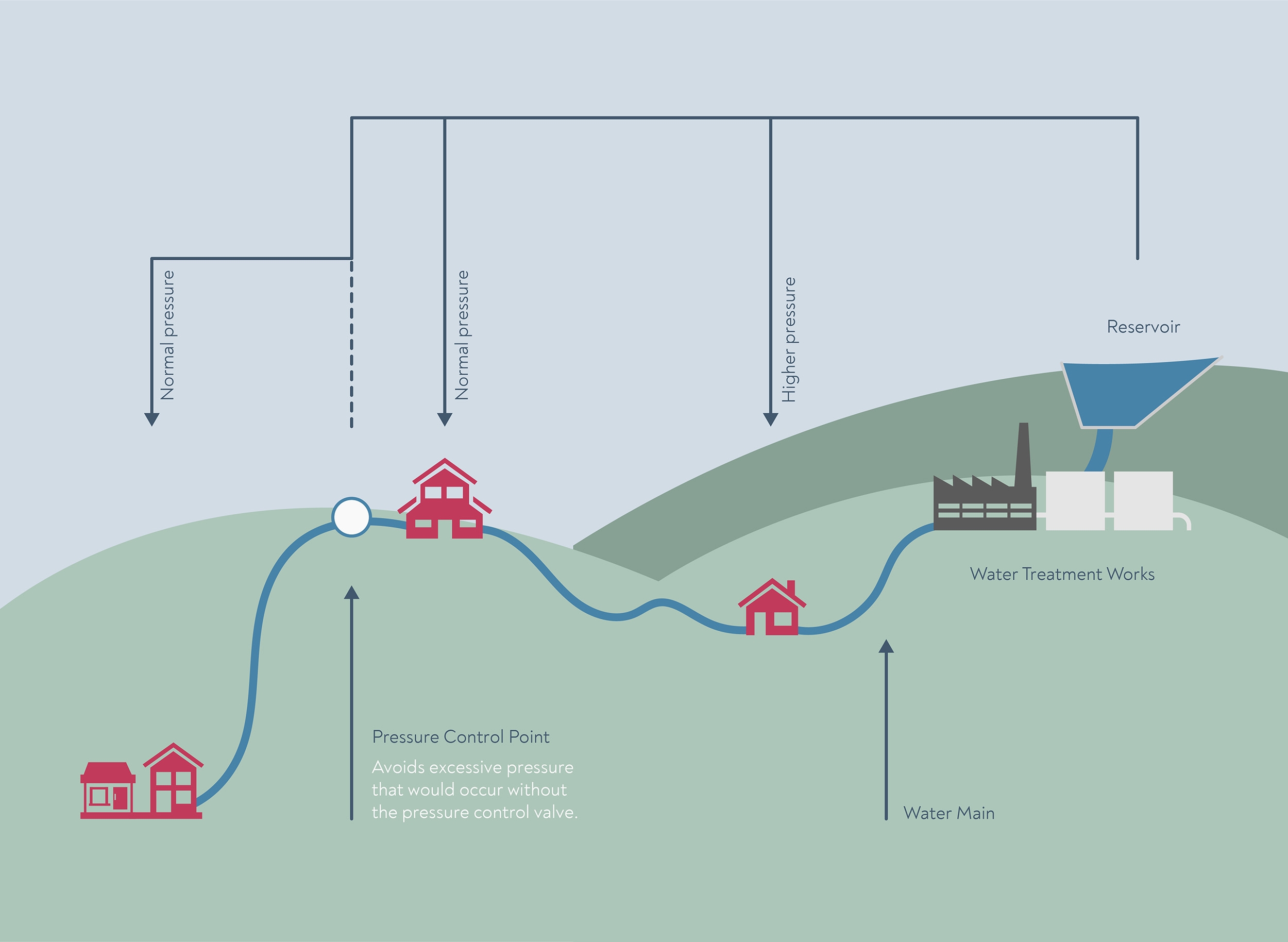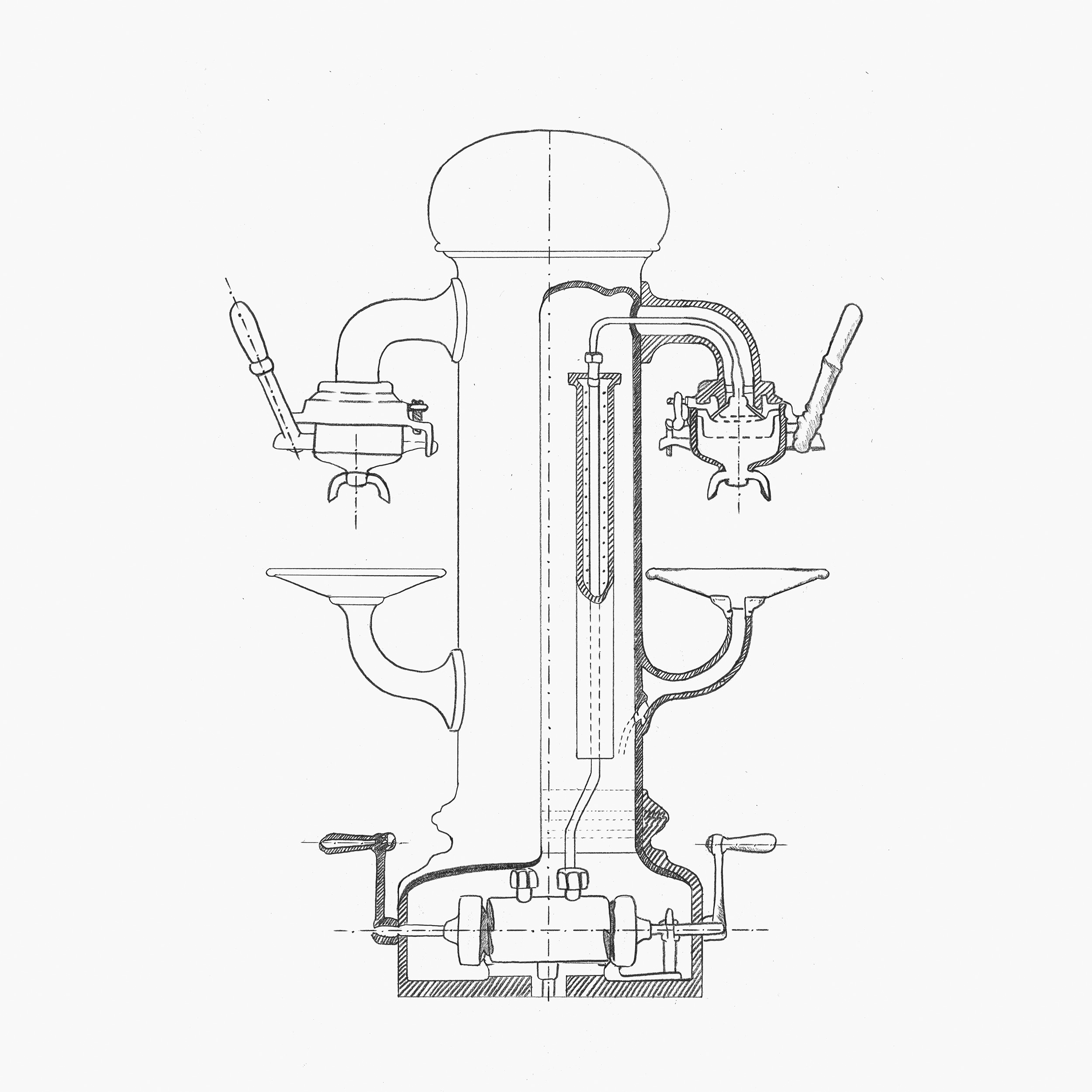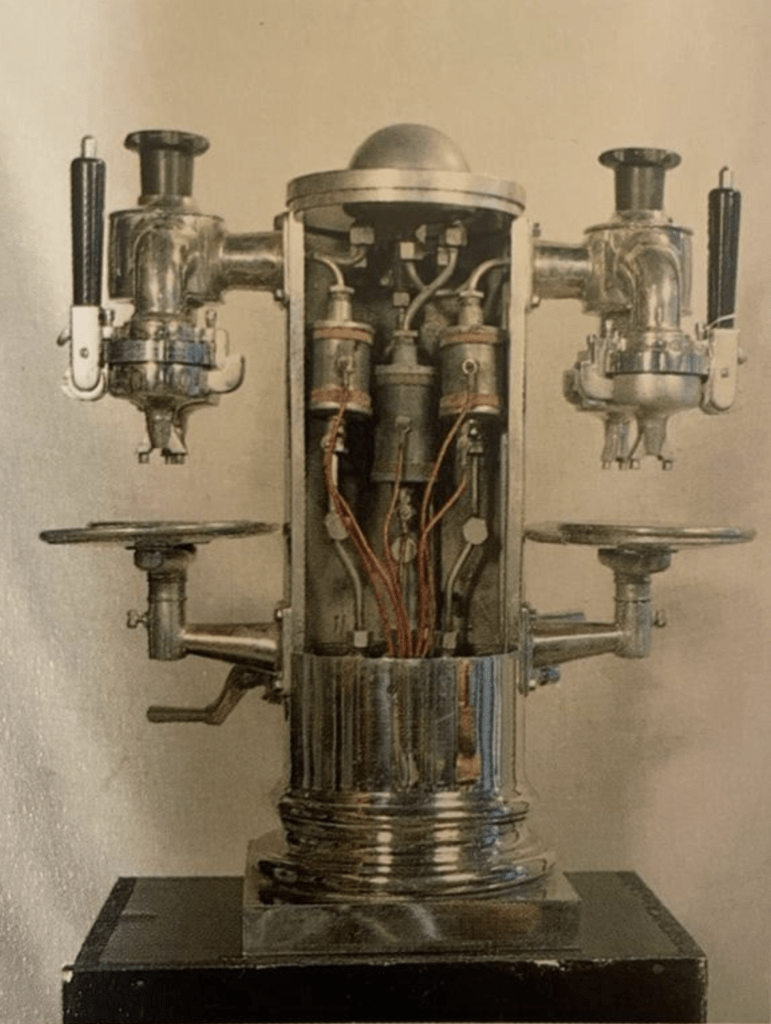In most towns, the public water supply is pumped out of a large reservoir or an aquifer (an underground water deposit), purified, and then pushed up to an elevated holding tank, usually sited at a high point in the terrain. This allows the water to syphon downward into houses and businesses via gravity. The water usually arrives at a café with between 1 and 6 bars of ‘line pressure’, depending on the elevation of the water tank — the higher the tank, the greater the pressure. Every 10 metres of elevation produces an additional 1 bar of line pressure.
 A model of how water line pressure varies, depending on the location of your cafe
A model of how water line pressure varies, depending on the location of your cafe
Where elevations are excessive, water suppliers add pressure-reducing valves to the water mains. Around 3 bars of line pressure is generally considered optimum for espresso machines.
An Experiment with Crema
Espresso crema is widely believed to have been seen for the first time in the 1940s, after the invention of the Gaggia lever machine. But we at Barista Hustle think it’s more likely that crema became central to the marketing of espresso after this time. To find out whether espresso crema might have been seen a little earlier than the ’40s, we designed an experiment with the help of Argentine barista trainer, Julia Parera Deniz.
ملاحظات
There was one goal in this experiment: Do you get crema when you brew at 3 bars? The answer is, you certainly do.
We used three simple metrics: وقت تحضير الجرعات, thickness, and persistency.
To test the thickness, we poured the espresso into shot glasses and measured the thickness of the crema with a ruler. As you can see in the results below, the machine produces a thick layer of crema at 9 and 6 bars. The shots pulled at 3 bars still produced a thick layer of crema, though it was around 20% thinner than the shots pulled at higher pressure.
To gauge the persistency, we also measured the amount of time before a hole appears in the top of the crema. All pressures tested produced extremely persistent crema that took longer than 10 minutes before a hole appeared in the surface of the foam. However the shots brewed at 9 bars produced crema that was the most persistent.
It is well know than dark roasts and robusta produce the thickest and most persistent crema, however in this experiment we attempted to use a traditional pure arabic blend which consists primarily of a Brazillian beans, like the kind of coffees available in the 1930s. So for this experiment we used an espresso blend by Lavazza. Had we used a very light roast, the crema would have almost certainly been less thick and persistent. Nonetheless, this test gives good evidence that the espresso machines of the 1920s and 30s like the Snider machine, would have been able to produce crema very similar to what we see today.
We observed almost no difference in وقت تحضير الجرعات as pressure was reduced from 9 bars to 6 bars. Whilst the 3-bar shots were 20% slower than the 9-bar shots.
النتائج
| Crema Experiment — الإسبريسو Grind Setting | Test Number | Depth of Crema (mm) | Persistence (min:sec) | Shot Time (seconds) |
| 9 bars | Test 1 | 4 | 19:00 | 26 |
| Test 2 | 5 | 12:30 | 29 | |
| Test 3 | 5 | 22:00 | 26 | |
| Mean | 4.7 | 17:50 | 27 | |
| 6 bars | Test 4 | 5 | 11:30 | 27 |
| Test 5 | 5 | 18:00 | 27 | |
| Test 6 | 5 | 10:00 | 28 | |
| Mean | 5 | 13:10 | 27.3 | |
| 3 bars | Test 7 | 3 | 13:15 | 33 |
| Test 8 | 4 | 10:50 | 33 | |
| Test 9 | 4 | 10:33 | 31 | |
| Mean | 3.7 | 11:32 | 32.3 |
The Snider Machine
 An illustration from Marius Malausséna’s 1921 patent.
An illustration from Marius Malausséna’s 1921 patent.
Collector Ian Bersten describes Guido Snider’s design from the 1920s as ‘one of the best espresso machines before the war’. Frenchman Marius Malausséna developed the technology used in the machine. Certain patents by Snider and Malausséna are virtually identical, but the relationship between these two inventors is unknown. The Snider machine went on to garner 15% of the total machine sales in prewar Italy (Bersten 1993). The likely reason for its popularity was its combination of electric heating, an efficient heat exchanger, and mains pressure. The pressure at the group head was higher than that of machines such as Pavoni’s Ideale, which used steam pressure.
Also, brew baskets of this era had quite large hole diameters — greater than 300 microns, by Bersten’s estimate. The typical grind size therefore had to be a little coarser than what we are able to use today. For this reason it was to be a few more decades before espresso assumed its modern identity as a small, potent shot.
A view of the internals of a Snider electric espresso machine
